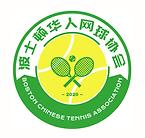YYANKEE ANKEE PPROSE ROSE


President’s letter page 1
Division Conference information, page 6
New members, page 10 State events, page 11 Certification information, page 14 Racquet sports business, page 16 Racquet sports career, page 28 Take a look



President’s letter page 1
Division Conference information, page 6
New members, page 10 State events, page 11 Certification information, page 14 Racquet sports business, page 16 Racquet sports career, page 28 Take a look
Division President: Lisa Wilcott metennis@comcast.net
Regional Vice President: Milan Kubala stowemiles@gmail.com
Treasurer: Christy Bennett bennett@newengland.usta.com
Secretary: Wilbur Shardlow shardlowtennis@roadrunner.com
Vice President: Kristen Gerety kdgerety@icloud.com
Vice President: Mike Hill michael hill@alumni brown edu
Past President: Mike Kolendo mkolendo46@gmail.com
NE Executive Director: Pam Dodman pam.dodman@rspa.net

As spring approaches, it is always gratifying to observe the melting snow on the courts and to see players of all ages, levels, and abilities venturing outside, and engaging in their sports regardless of the weather conditions.
There have been numerous positive developments regarding the USPTA/RSPA transition, and we hope that you have remained well informed and engaged. The New England communications and National weekly newsletters have provided valuable information, and we trust that you have had the opportunity to participate in some of the webinars, podcasts, and review resources available at tennisresources.com.
There are various racquet certifications available throughout New England, including tennis, pickleball, and platform. Additionally, Padel certification dates are becoming available throughout the US and filling up quickly.
One of the most effective ways to remain engaged with RSPA New England is to attend the upcoming Annual Summit Conference on May 8th and 9th in Waterville Valley, NH. This event provides an excellent opportunity to network with fellow members, become more involved with our division, and contribute to the growth of our sports. In addition to the conference featuring distinguished speakers, we will also offer a pickleball certification following the event (the pickleball certification requires a separate registration and fee).



I would like to extend my gratitude to our State Presidents for their continued involvement and for hosting networking events within their states. If you are interested in becoming more involved in your state, please do not hesitate to reach out to them or any of us on the New England Board for assistance. We are here to support you in your efforts to grow the game. Additionally, I hope that many of our members have had the opportunity to participate in some of the High School Tennis workshops recently held throughout New England.
If you would like to nominate another member for one of our New England Awards, please submit your nomination promptly. Awards Presentation will be at the RSPA NE Conference.
Please consider attending the World Conference in Hawaii this September. It promises to be an exceptional event. Due to limited hotel availability, we recommend registering as soon as possible to secure your spot.
Thank you to our New England Board for volunteering their time to help our division grow, and to our Executive Director, Pam Dodman, for keeping everyone informed. Please let us know how we can assist you or if you are interested in volunteering on any committee.
Happy Spring!
Lisa Wilcott
RSPA New England President



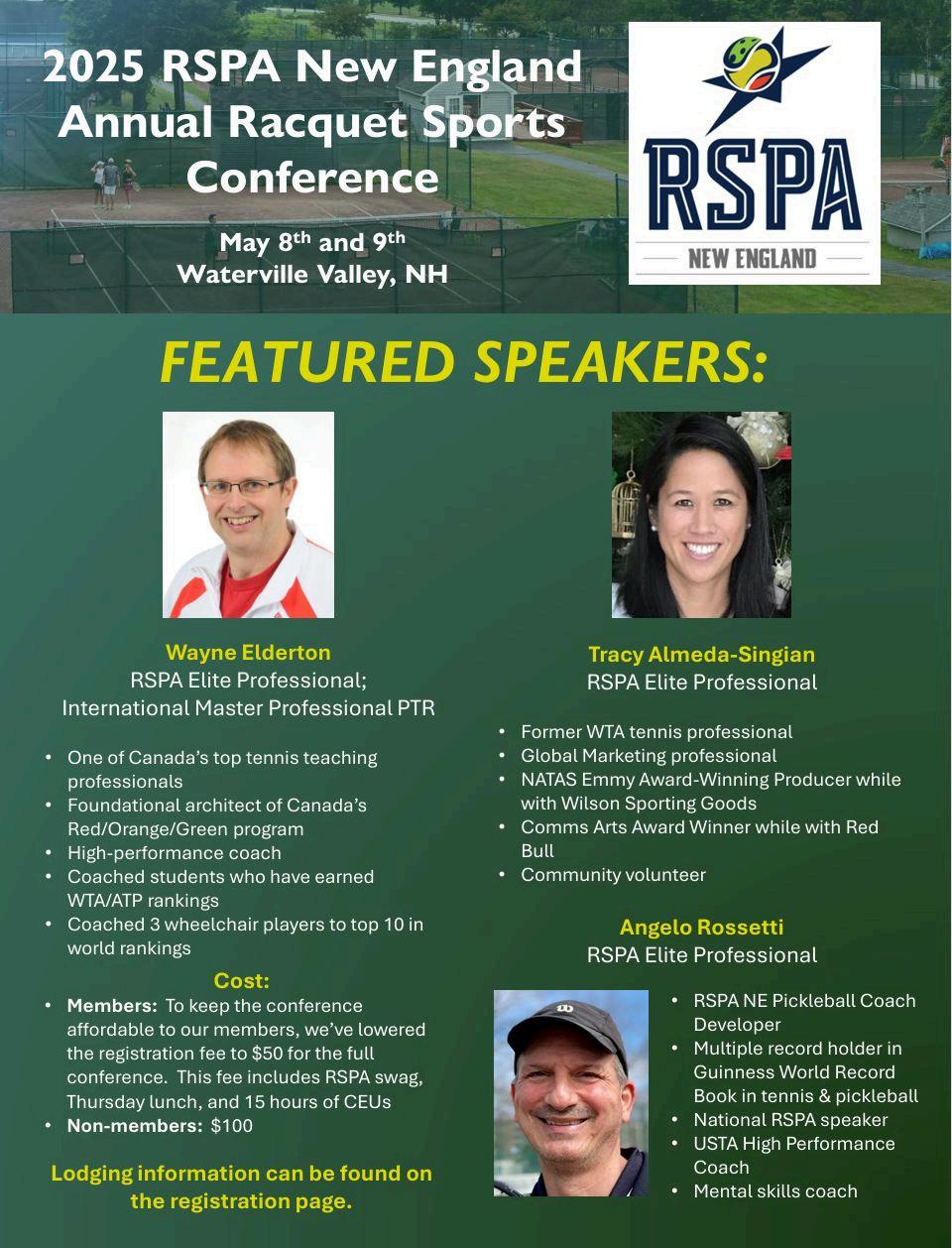


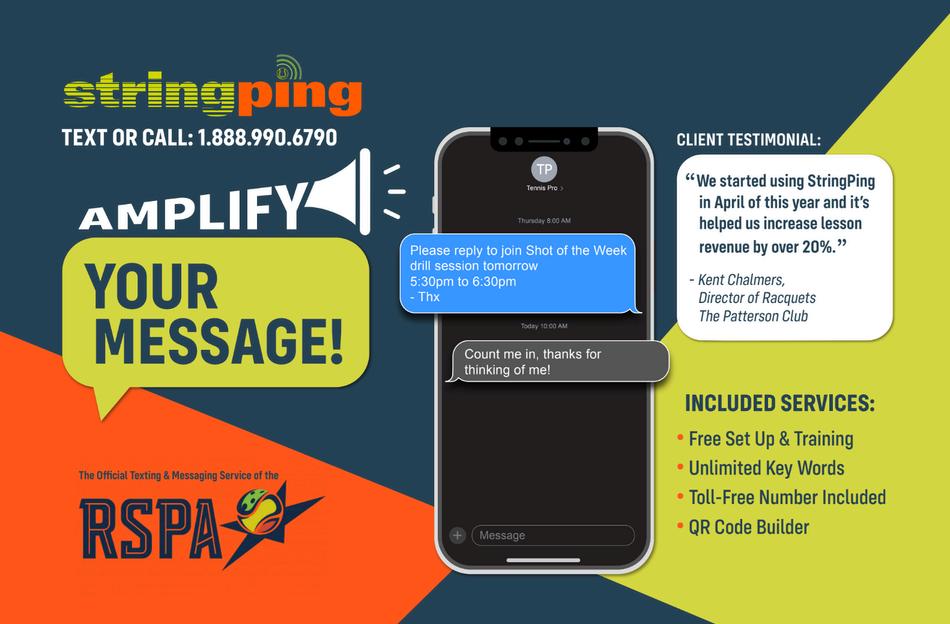


CONGRATULATIONS to the following RSPA Members who received awards from the Maine Tennis Association.
Jason Terry for the Adult Coaching Professional Award
Luke Korzekwa for the Junior Coaching Professional Award
Wilbur Shardlow for the Lifetime Achievement Award
MidCoast Recreation Center (Director Seth Meyer) for the Indoor Facility of the Year Award
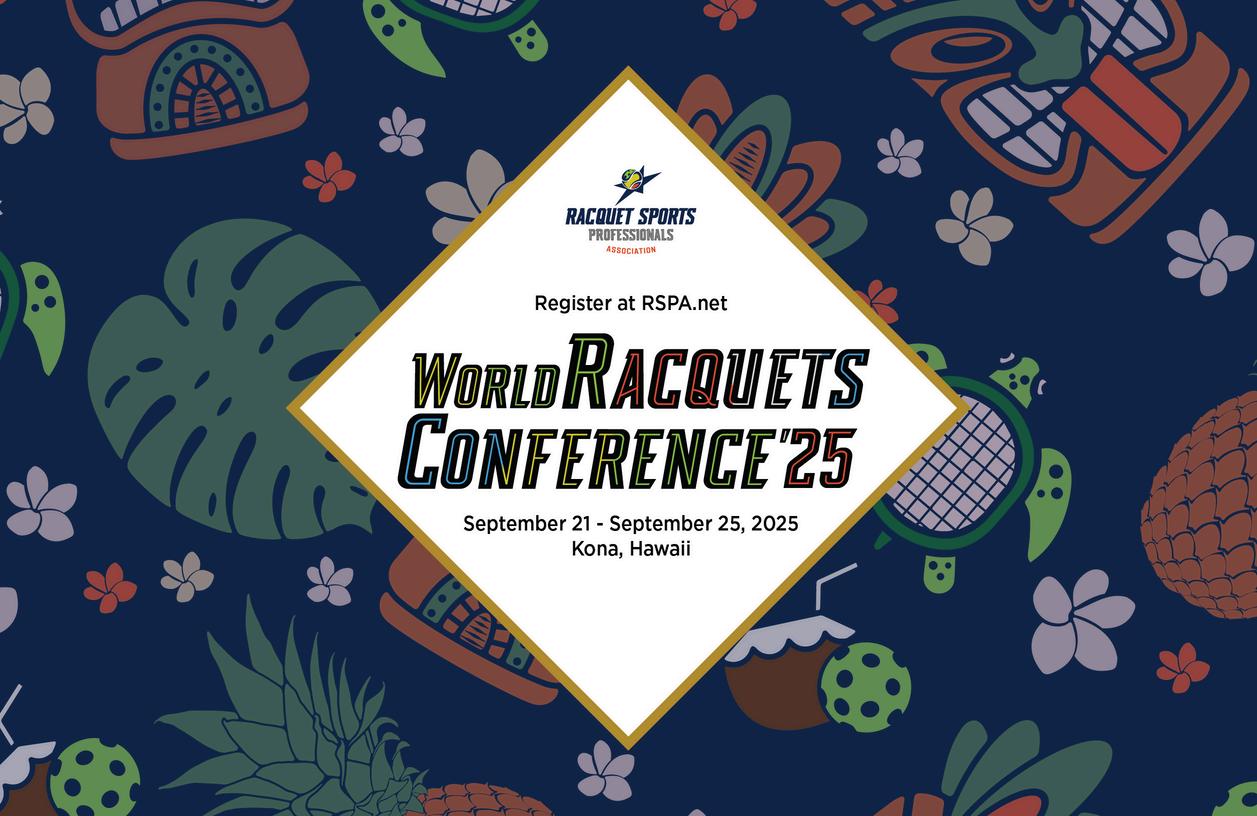
Congratulations to the following new members. We are so happy to have you in our organization!

Tennis Professionals:
Matt Kay (MA)
Alex Wong (MA)
Jason (Limin) Wen (MA)
Barbara Delmondes (RI)
Nancy Donahue (NH)
Pickleball Professionals:
William Barry (MA)
Robert DeGray (CT)
Kyle Schermerhorn (CT)
Pickleball Instructors:
Bryce Knackstedt (CT)
Regina Mastrianno (CT)
Rebecca Morris (CT)
Andra Yanchenko (ME)
Srinivas Yellayi (CT)
Padel Professionals:
Patrick Arapi (CT)
Fausto Baraldi (CT)
Daniel Ferrari (CT)
Scott Hinding (CT)
Tennis Instructors:
Risto Juntunen (RI)
Barbara Bailey (MA)
Stephanie Canales (CT)
Jacob Clemen (RI)
Davida Dinerman (MA)
Christopher Duffy (CT)
Doug Folsom (MA)
Christopher Kirkpatrick (MA)
David Sonner (MA)
Jennifer Stempel (MA)
Thien Tran (CT)
Miguel Triay (CT)
Susan Hanley (RI)
Glen Herbert (CT)
Ethan Hutchinson (VT)
Matt Pretescu (MA)
Daniel Velek (CT)
Padel Instructor: Tamara Ochoa (CT)
Platform Tennis Instructors: Martin Bugaj (CT)
Brendan Jimenez (MA)

l-r: Bharat Chopra (GM-Product & Growth, Sensa Padel), Phil Hayman, Darryl Baynes, Michael Mercier, Todd Hiscox, Stu Lehr, Corey Thompson (Operations Manager & Head Coach Sensa Padel), MJ Bronsky (Wilson Territory Manager for New England), Walter Panis, Kristen Gerety, Aditya Khilnani (CEO Sensa Padel)
Thanks to Stu Lehr, RSPA NE Mass State President, professionals were treated to an evening learning about and playing the up-and-coming new game (in the US)....Padel!!! This sport is part tennis (play with a tennis ball, use a tennis net), part squash (play off a wall), part platform tennis (play with a paddle but a THICK one). Everyone had a fantastic time. Click here to watch a video of padel being played.





Rhode Island racquet professionals came together for a Meet and Greet at a local eatery to meet fellow professionals, share stories, share laughs, and share appetizers! Present were a college coach, high school coaches, club professionals, and independent contractor coaches. A great mix! Also present were the RSPA RI state president, Mike Michaud, RSPA NE Board member, Kristen Gerety, and RSPA NE ED, Pam Dodman. This event was open to members and nonmembers!



l-r: Matt Petrescu (MA), Andie Joseph (MA), Carolyn Tremblay (MA), Pam Dodman RSPA NE Coach Developer
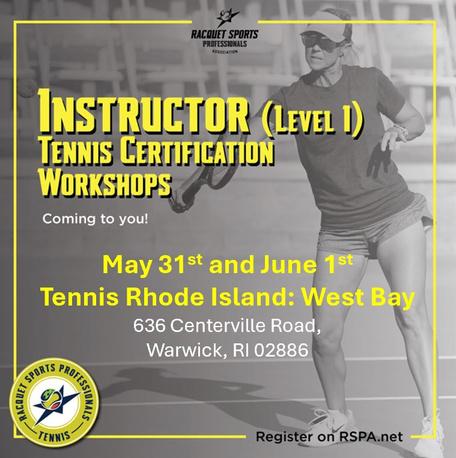
We had a small but mighty group for our second Level 1 Workshop held at the Sportsmen’s Tennis & Enrichment Center in Dorchester, MA. The applicants did an excellent job and are very passionate about tennis!
Our next Level 1 Certification Workshop will be May 31st and June 1st at Tennis Rhode Island: West Bay in Warwick, Rhode Island. Please click on the graphic below to register.
DID YOU KNOW that even if you are certified you can attend a workshop and get educational credits! This would be a great way to get a refresher, meet new people, and get your CEUs. Contact Pam Dodman at pam.dodman@rspa.net if you’re interested!
Also, don’t forget about pickleball! Add to your resume by getting pickleball certified!


by Tim Owens; Co-Founder/Owner CourtReserve
If your club’s growth strategy starts and ends with “get more members,” your strategy isn’t just outdated – it’s broken. Getting more members doesn’t automatically equal more revenue and packed courts don’t guarantee profit. This constant push for more members, full courts, and endless bookings might look good on paper, but it’s not sustainable.
The truth is – many clubs are just chasing numbers. Focusing on membership numbers and court bookings is not enough to succeed long-term or in today’s competitive landscape.
Enter: Revenue Per Player (RPP) – the metric your club can’t afford to ignore.
RPP shifts your focus from surface-level metrics like tennis or pickleball court utilization to how much value each player brings to your club – whether it’s through memberships, lessons, events, or retail. But, it’s not just a snapshot of your revenue; it’s a playbook for how to grow smarter. When you understand RPP, you stop guessing and start making datadriven decisions. You see what’s working, where to invest, and how to turn every interaction into meaningful growth.
Because this is such a critical topic, we’ve broken it down into a three-part series. Each barticle will deep dive into a key aspect of RPP – giving you the insights you need to increase revenue and transform your club’s growth strategy.

Here’s what you can expect:
Part 1: What is RPP and Why it’s the key to tennis & pickleball club growth
Part 2: How to increase RPP: 6 strategies for smarter growth
Part 3: How to track RPP + real-world examples
Revenue Per Player (RPP): What it is and why it matters.
RPP isn’t just another throwaway metric – it’s the key to unlocking sustainable growth and profitability for your tennis or pickleball club. To fully harness its potential, you need to understand the fundamentals and why it outshines traditional metrics like racquet court utilization
So come along with us as we discuss the following in Part 1:
What is Revenue Per Player (RPP)? Definition + Formula
Revenue Per Player (RPP) is a powerful metric that measures how much revenue each player contributes to your club. Unlike other tennis and pickleball club metrics, RPP offers a holistic view of player spending across all touchpoints – including memberships, lessons, events, retail purchases, food, drinks, and more.
You can calculate Revenue Per Player by dividing the total revenue by the number of active players in your club.

Using this formula to calculate your RPP, you’ll gain a complete view of player spending. With this information, you can pinpoint opportunities to boost revenue through additional services, events, and offerings –ultimately creating more engaged and profitable members.
Racquet Court Utilization vs. Revenue Per Player (RPP): Which is better?
As you may already know, tennis and pickleball court utilization refers to the percentage of available court time that is actively booked and used within a given time period. It measures how efficiently your club’s courts are being scheduled and occupied for activities such as matches, lessons, clinics, or events. This metric is a popular way to gauge operational efficiency – helping clubs identify peak usage times, underutilized slots, and opportunities to optimize court availability.
Although this metric is a go-to for many tennis and pickleball clubs, court utilization comes with a natural revenue ceiling Courts are finite resources, and there are only so many hours available for reservations each day.
This narrow focus overlooks a crucial factor of running a successful club: the impact individual players have on your club’s revenue
And that’s where Revenue Per Player (RPP) becomes the superior metric.
RPP delivers a comprehensive view of how players spend and engage with your club As a result, you gain a deeper understanding of player buying activity and how it contributes to your total revenue.
While court utilization can be a helpful metric for understanding tennis and pickleball court efficiency, it fails to capture the broader financial contributions players make or the revenue opportunities beyond reservations. And because courts are limited resources, this metric naturally caps how much income it can drive.
RPP breaks through these limitations. By focusing on the total value each player contributes, RPP helps you identify new opportunities, from upselling services to creating new revenue streams. And, you gain a holistic understanding of your club’s earning potential – enabling smarter, growthoriented decisions.
Here’s a breakdown of why RPP is a more powerful and growth-oriented metric than court utilization:

Prioritizing Revenue Per Player over court utilization allows you to identify untapped revenue opportunities and adopt targeted growth strategies –leading to enhanced player experience and maximized revenue from every interaction.
This shift not only drives greater financial growth for your club, but also works to increase player engagement – ensuring long-term success for your club.
Unlike traditional metrics that focus on court space or membership sales, RPP helps you uncover new opportunities, identify high-value players, and reimagine how your club generates income.
Here’s why RPP is the ultimate metric for driving sustainable growth.
Growth doesn’t happen overnight, and it doesn’t come from a single action. Instead, it’s the result of many small, consistent efforts working together to build momentum over time. This idea lies at the heart of the flywheel concept, originally introduced by business strategist Jim Collins.
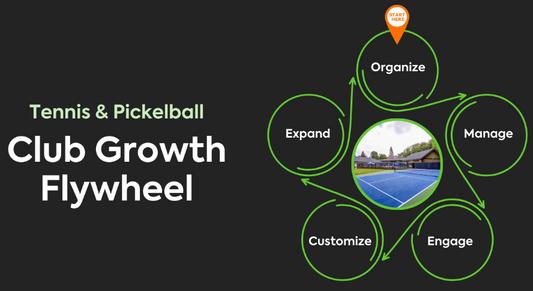
In this business strategy, the flywheel is a massive, heavy wheel that takes effort to get moving. But once it gains momentum, it becomes nearly unstoppable. Each push builds on the last, creating a self-sustaining cycle of growth. In the business world, this concept has been applied to help businesses achieve sustainable success by identifying and optimizing key areas that fuel their progress.
We’ve adapted this idea into the “Club Growth Flywheel,” a strategic model designed specifically for tennis and pickleball clubs. It focuses on building momentum across five key areas:
Organizing operations
Managing resources
Engaging members
Customizing offerings
Expanding your business
Success in one area naturally fuels success in the next – creating a continuous cycle of improvement. Think of the flywheel as your blueprint for running and growing your club sustainably.
But what does this have to do with RPP?
RPP turns the flywheel into a dynamic, datadriven system. It highlights what’s working, identifies gaps, and ensures that every investment you make strengthens the cycle. Together, the club growth flywheel and RPP create a sustainable growth engine, propelling your club toward long-term success.
For example:
If you increase member engagement (through events, lessons, or clinics), RPP helps you see whether those programs result in higher spending per player. Let’s say data shows that lessons generate significant revenue growth. Then, you can prioritize expanding your lesson offerings or creating advanced clinics to maximize their impact.
On the other hand, if RPP shows that certain programs don’t yield much financial return, you can adjust or replace them with more profitable initiatives.
By combining the strategic power of the club growth flywheel with the actionable insights of RPP, your club can achieve measurable, sustainable growth — ensuring every effort contributes to greater profitability and a stronger member experience.
2. Provides a clear picture of player value
Not all members contribute to your club in the same way. Some players participate in weekly lessons, providing consistent revenue and others may use the courts occasionally but spend significantly on gear, refreshments, or private events.
Tracking Revenue Per Player provides the data you need to understand these unique spending patterns By analyzing how each player engages financially with your club, you can effectively segment your audience and tailor your strategies to meet their needs.
And with RPP providing data on which player segments drive the most revenue, you can strategically focus your efforts where they’ll deliver the greatest results. Whether it’s upselling premium services, crafting targeted marketing campaigns, or offering exclusive perks, RPP ensures your decisions are datadriven – maximizing both engagement and revenue.
3. Identifies revenue opportunities beyond court time
Memberships and court bookings are often the primary revenue streams for clubs. However, relying solely on these areas means missing out on significant growth opportunities elsewhere.
RPP provides you with a broader perspective –showcasing additional ways to generate income and encouraging a more holistic approach. From clinics and lessons to social events and pro-shop sales, it reveals revenue streams that might otherwise go overlooked.
This metric also highlights opportunities for upselling and cross-selling to your existing members – turning every interaction into a chance to deliver more value for both your players and your club.

Speaking of upselling and cross-selling, your most active players may not be fully utilizing all of your club’s services.
RPP highlights underperforming segments and engagement gaps – revealing players who regularly use your facilities but don’t take advantage of additional offerings. These insights uncover valuable opportunities to increase participation – and boost your revenue in the process.
With targeted marketing campaigns or personalized offers, you can inspire these players to explore more of what your club has to offer. Whether it’s lesson packages, exclusive events, or special discounts, RPP ensures your efforts are focused on unlocking hidden value.
A great player experience is essential for customer retention, and RPP provides the insights needed to enhance both. Tracking how players engage financially with your club highlights areas where their experience can be improved.
For example:
Players who are less engaged present opportunities for personalized offers or curated experiences – helping them feel more connected to your club.
Members who spend heavily on lessons might appreciate exclusive coaching packages or early access to new programs. Frequent event participants could value priority registration, VIP perks, or tailored event recommendations.
Focusing on these insights allows you to deliver personalized, high-value experiences that strengthen loyalty. And when members feel valued and catered to, they’re more likely to stay – and spend – over the long term.
This is all to say – RPP doesn’t just measure revenue; it helps you understand what truly resonates with your players – transforming their satisfaction into sustained engagement and growth.
RPP: The MVP of tennis & pickleball club metrics
As you can see, RPP unlocks a new way of thinking about your club’s revenue and growth. It shifts the focus from simply stacking courts or counting memberships to understanding how players’ actions and decisions drive your bottom line.
Click here to read Tim’s follow up blogs on the Revenue Per Player metric!
With RPP, you gain clarity on where your club thrives and where there’s room to improve. It’s your blueprint for refining offerings, doubling down on what works, and creating a club experience that players won’t just enjoy –they’ll invest in.
In Part 2, we’ll explore the strategies that help you increase RPP and turn these insights into meaningful, measurable growth.

Tim and his wife, Ashley, are co-founders of CourtReserve Tim is a techincal guy Ashley is a marketing genius They both LOVE tennis and pickleball. So they decided to combine their strengths and create CourtReserve. They now own a pickleball facility.




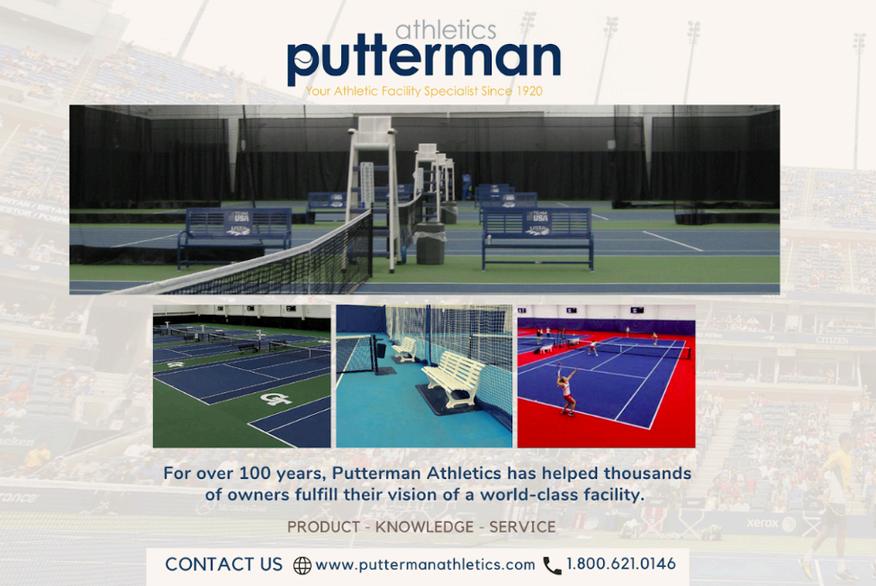
by Ryan Johnson; JD, CRSE, RSPA Elite Professional, DCA, PTR, PPR, PadelMBA, McMahon Careers
Over the last four years, Pickleball has witnessed an explosive rise in popularity. The sport grew to 13.6 million players in the United States according to the 2024 Sports and Fitness Industry Association (SFIA). This recent growth represents a 55% increase from 2022-2023 and an incredible 223.5% growth rate from 2020. Clubs and facilities are uniquely positioned to capitalize on this trend by developing comprehensive pickleball programs Such programs can significantly boost revenue and member satisfaction, provided they address two of the most common challenges: players often ask, "Where do I go next?" and many are reluctant to take lessons. This article will provide some ideas on how to navigate these challenges effectively.
First and foremost, your team should include a professional that is dedicated to the pickleball program Many facilities have recognized the importance and value of staffing a Head Pickleball Professional and are providing competitive compensation packages to attract and retain top talent. This professional will be instrumental in developing the pickleball program and cultivating relationships with the members.
Once you have the right pickleball professional in place, you are ready to develop a pathway for skill progression. This will serve as your framework or roadmap for your players. This can cover everything from your Intro to Pickleball class to your Advanced Clinics/Play. The clinics and programming that you provide will be somewhat dependent on your players.

As with any part of your racquets program, you will want to provide a diverse selection of offerings that accommodate the wants and needs of your members. Moreover, this pathway should address the first challenge of dealing with the next step for your players. It’s incumbent on us as professionals to develop offerings that will retain players and provide the proper next step in their pickleball journey. This can be in the form of social and/or competitive play opportunities.
As part of the pathway for skill progression, it’s recommended to define skill levels that fit your program. Players want to understand objectively where they fit and, in most cases, how they progress to the next level
The second challenge is the most pervasive, in my opinion. I’m sure many of you have experienced the notion that pickleball players don’t want to take lessons. For a sport that began with social play at its foundation, I can certainly understand how this culture developed. And for many players, the social component is one of the most attractive aspects of the sport That said, I believe that many players want to progress their
skills and game if provided in the right environment One way of approaching this challenge is to build a competitive ecosystem in your program. By creating this competitive environment, you are providing an incentive and value for players to improve. This can be in the form of club tournaments, interclub play, pickleball exchanges, and many others. At PVCC, the development and implementation of interclub play was the biggest driver in lesson revenue growth Members were now competing against players outside of the club and in a team environment, which created numerous incentives for developing their skills and game.
Another approach to addressing these challenges is to offer free introductory classes This lowers the barrier to entry and demonstrates the value of coaching With your well-developed pathway, you will confidently be able to guide your players to their next step in the program.
Developing a comprehensive pickleball program can significantly enhance both revenue and member satisfaction at your facility. By addressing the common challenges of skill progression and lesson participation, you create an environment where players feel supported, engaged, and motivated to improve; Implement structured skill pathways; Offer engaging and fun lessons, and capitalize on various revenue opportunities. With these strategies, your pickleball program will not only attract new members but also retain and satisfy existing ones, fostering a vibrant and thriving community

Ryan Johnson is the Director of Racquet Sports at Paradise Valley Country Club. Ryan lends his expertise to McMahon Careers as the Liaison to the firm’s Young Professionals Group and its work with young Racquet Sports Professionals who aspire to career success and leadership roles in the racquet sports industry
Ryan serves RSPA Southwest as a Division Board Member, Head Pickleball Tester, and as Chair of the Elevate Committee A RSPA Elite Professional, Ryan has also achieved CRSE designation as a Certified Racquet Sports Executive Ryan is certified as an Adult Development Professional with PTR, has a Professional rating with the PPR, and has earned certification with the IFP In 2021, Ryan was the recipient of the RSPA Southwest Elevate Award and was recognized as the RSPA National Elevate Professional of the Year.
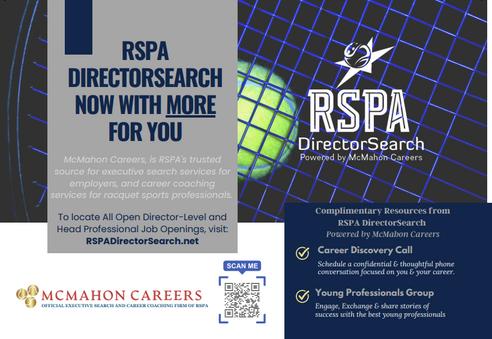

by Jason Wen; RSPA Elite Professional, Boston Chinese Tennis Association
Coaching is more than just a career it’s a calling for those passionate about helping others reach their full potential, both personally and professionally. Whether in sports, business, life skills, or personal development, coaching offers a unique blend of challenge, satisfaction, and the opportunity to make a lasting impact If you’re considering a career that is fulfilling, dynamic, and meaningful, coaching might just be the perfect path for you.
As a tennis coach in Longfellow Tennis Club with more than 20 years tennis coaching experience from New York and Boston areas, I believe that coaching can positively influence and guide others by inspiring, motivating, and empowering athletes to push beyond their limits Coaches often become mentors, offering advice on life lessons, perseverance, teamwork, and managing success or failure skills that can shape an athlete’s character long after their playing days are over. The fulfillment that comes from watching someone grow and achieve their goals makes coaching an incredibly rewarding career. I was so happy to see my students join their high school varsity teams Some of them became team captains and some won the Massachusetts public high school and Massachusetts private high school team championships. Perhaps the most profound aspect of a coaching career is the chance to make a real difference in people’s lives. Coaches have the privilege of helping others unlock their potential and achieve things they may not have thought possible

Another key benefit of coaching is the constant opportunity for personal and professional development Coaches must stay up-to-date with the latest strategies, techniques, and trends in their area of focus. For example, sports coaches may attend workshops, watch game footage, or take certifications in new training methodologies. Additionally, being a coach often requires honing your own emotional intelligence, communication skills, and ability to motivate others. These are invaluable personal growth experiences that not only make you better at your job but also enrich your personal life
The demand for skilled coaches is on the rise, particularly in racquet sports such as tennis, pickleball, and padel. The growth of online platforms also makes it easier for coaches to reach a global audience, further expanding their potential client base
However, coaching is always facing challenges and difficulties. For example, tennis coaches often face the following issues, including balancing skill development with competitive success, dealing with conflicts or unrealistic expectations from parents or players, pressure for results, preventing and managing player injuries while maintaining performance levels, etc
To get more real and practical feedback about coaching career, the author interviewed several senior-level tennis coaches from the Longfellow Tennis and Health Club with related questions.
Phil Parrish, Longfellow Director of Tennis, who is RSPA Elite Professional and former USPTA New England President
“The difference between teaching high performance players versus recreational players has to do with the terms Function Drives Form and Form Drives Function. Recreational players are working on form so they can do the correct function (hit crosscourt, high heavy, etc ) For high performance players it is Function Drives Form. You play matches and tournaments and you find out why you are losing and you work on the technique to correct it so you have the function.”
“The biggest challenge everyone has is when the student is there when they do not want to be As a coach/pro you try your best to motivate your students, ”
“As a pro/coach, you have to show you have confidence in your student and break it down for them. Everyone is different, so you have to be willing to work out of the box. Some students
need to be fed 1000 of balls a lesson, some need to see a video or a lot of shadowing, others need targets with little instruction. Each student has his own unique learning style and we must be flexible in our teaching style.”
“I try to get my students to achieve the best version of themselves through tennis It is a great sport to learn about yourself and apply the lessons to get the best out of your life.”
Davida Dinerman, Longfellow Natick Tennis Club Manager, who currently serves on the boards of the New England Senior Tennis Foundation (NESTF) and the National Women's Tennis Organization (NWTO)
“Not seeing sufficient progress due to the player not practicing or taking a group clinic even one more day per week. Players cannot improve with one lesson once a week.”
“I am patient and review the basics longer and adapt my teaching to their current progress, and not where I think they should be I must teach to the student. Every student learns differently and at a different pace. The only thing that comes between levels is practice.”
“Seeing players get the “aha” moment after working hard on a skill and then start to do what they want to do with their racquet and body It is a thrill to watch a student start to play live points, games and sets, and work toward more strategic parts of the game.”
continued
Joe Lisi, Longfellow Natick Tennis Club Director of Junior Program, who graduated from Springfield College with Bachelor's Degree in Movement Sports Studies and Masters in Athletic Administration.
“In my experience working at various tennis clubs, colleges, and country clubs, the three most critical areas most coaches need to improve are their court organization, feedback, and progressions/regressions In terms of court organization, coaches should design drills, rotations, and competitive playing situations that offer their students plenty of opportunities to practice their skills and limit standing in lines. Feedback should be specific to what the student is currently doing and what the coach wants them to achieve Feedback should be positive or corrective Rarely should negative feedback be used. Drills, playing situations, and strategy needs to be broken down to its simplest form for easy understanding and then built up upon as the student masters the basic form or situation.”
“One of the biggest areas I feel coaches can improve is ‘Feedback’ One of the most important lessons I learned from my educational background was to always try to avoid using Negative feedback such as No, Don't, and Bad. Positive and Constructive feedback always works best since these can help motivate a student. Feedback such as: ‘I like how you tried to take the ball on the rise. Make sure you are making your swing a little more compact and then you will be able to time the ball better Keep up the great energy!’ These sentences help provide the
student with constructive and positive feedback and lets the student know they are on the right track. The majority of the feedback I try to provide is "specific feedback" rather than general feedback ‘I like the way you move your feet, stay low, and really hit through the ball on that last shot’ provides the students with positive and specific feedback instead of ‘great job’”.
“ … I was fortunate enough to acquire my undergraduate and graduate degrees from Springfield College, one of the leading Physical Education schools in the nation While there I learned that teaching is a process that one never masters but continuously improves Every student one coaches is different and how they learn and process information is different from one student to another. The same goes for classes, level of players, and clubs. I myself am constantly learning from other coaches in the industry and adding how they teach to my methods The goal should be to learn how to improve class management, visual, auditory and kinesthetic learning, skill progression and regression, strategy, and playing tactics. One of the best ways to see where you shine as a coach and where you could use some improvement is to video record yourself.”

continued
“I believe that great coaches can come from various backgrounds! Some have an extensive playing background and others come from a nontraditional background. There are many examples of great coaches that neither played on tour or played Division 1 tennis Some of the most important qualities I look for in a good coach are enthusiasm, positive communication, problem solving, selflessness, and a passion for the game.”
Coaching offers the rare opportunity to have a profound impact on others’ lives while enjoying a dynamic and fulfilling career. Whether you’re helping athletes reach their peak performance, guiding clients through personal transformations, or mentoring business professionals, coaching allows you to make a difference. With the flexibility to work in various fields and the ongoing potential for growth and development, coaching offers an attractive and rewarding career for those passionate about helping others succeed
If you’re looking for a career that combines meaningful work with personal fulfillment, coaching is a profession that can provide both. It’s a career that grows with you, challenges you, and allows you to continually evolve as both a professional and an individual

About Jason Wen: Jason Wen, Ph.D., MBA, CLP, RTTP President and Founder of Boston Chinese Tennis Association
RSPA Certified Elite Professional Tennis and PTR Longfellow Natick Tennis Club Pro/Coach
E-mail: BostonChineseTennisAssociation@gmail.com
